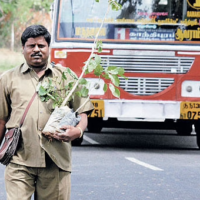I started thinking about the ideas expressed in The Life You Can Save back when I was a graduate student at Oxford. Like many young people, my consciousness of the world around me was expanding. I was becoming acutely aware of the economic inequality between the “developed” world and the “developing” world. I was surrounded by privilege while billions of people were living in extreme poverty, which meant that adequate food, housing, and health care was largely inaccessible. Millions of children were dying of illnesses largely treatable in England and other industrialised nations. I was also learning more about the inhumanity of factory farming and the impact on non-human animal suffering.
This awareness led me to become a vegan and to write and publish a book in 1975 called “Animal Liberation.” I am very pleased that this book appears to have had considerable influence, and I am updating it and will publish the updated version at the end of May.
The moral obligation
In 1972, I published an article entitled “Famine, Affluence and Morality,” which gradually became one of the most discussed books in applied ethics. In that article, and in the book The Life You Can Save, originally published in 2009, updated in 2019 and now available for free to you, I argue that those of us in the “developed world” have a moral obligation to people living in extreme poverty. I have suggested that if someone was walking by a pond in which there was a child drowning with no adult around to save her, people would easily make the decision to jump in and save her, even if it meant ruining an expensive suit of clothes and being late for a crucial appointment. Yet, I note that we don’t help children dying needlessly everyday, because they are not in front of us, and they are in foreign lands. I go on to argue that our behaviour is tantamount to murder, as these children could be easily saved by our donations to highly impactful, cost-effective charities facilitating health care, nutrition, and other protective measures like insecticide-treated bed nets. Fortunately, the ideas from the essay and the book have influenced many people, including ultra-high-net-worth individuals like Bill and Melinda Gates. Organisations such as The Life You Can Save and GiveWell curate, research and promote nonprofits that have already raised hundreds of millions of dollars.
Introducing these ideas to the vast audience that Give reaches allows me to further the discussion among the growing philanthropic community within India. India is an ideal place to encourage the value of “effective giving.” Despite India’s post-independence “economic miracle,” it remains one of the most economically unequal countries in the world, at once home to 140 billionaires and over 80 million people living in extreme poverty. But many Indians now have the capacity to help those still living in extreme poverty. This assistance will make a much greater impact if donors give in the most cost-effective ways. I encourage everyone to read the book, and share it with your friends, family and coworkers. I hope it will inspire your giving decisions as it has done for many other philanthropists — both large and small. Thanks to Give and all of you who take the time to read and think about the ideas in the book.
I am very grateful to Give for making The Life You Can Save ebook available to download for free.

Kumara was a professional journalist for over 15 years, with stints in The Telegraph and Reader’s Digest. He grew up hating maths and physics. He is a post-graduate in history. Kumara believes that cricket and Seinfeld have answers to most questions that life throws at you.
Discover more from give.do
Subscribe to get the latest posts to your email.





